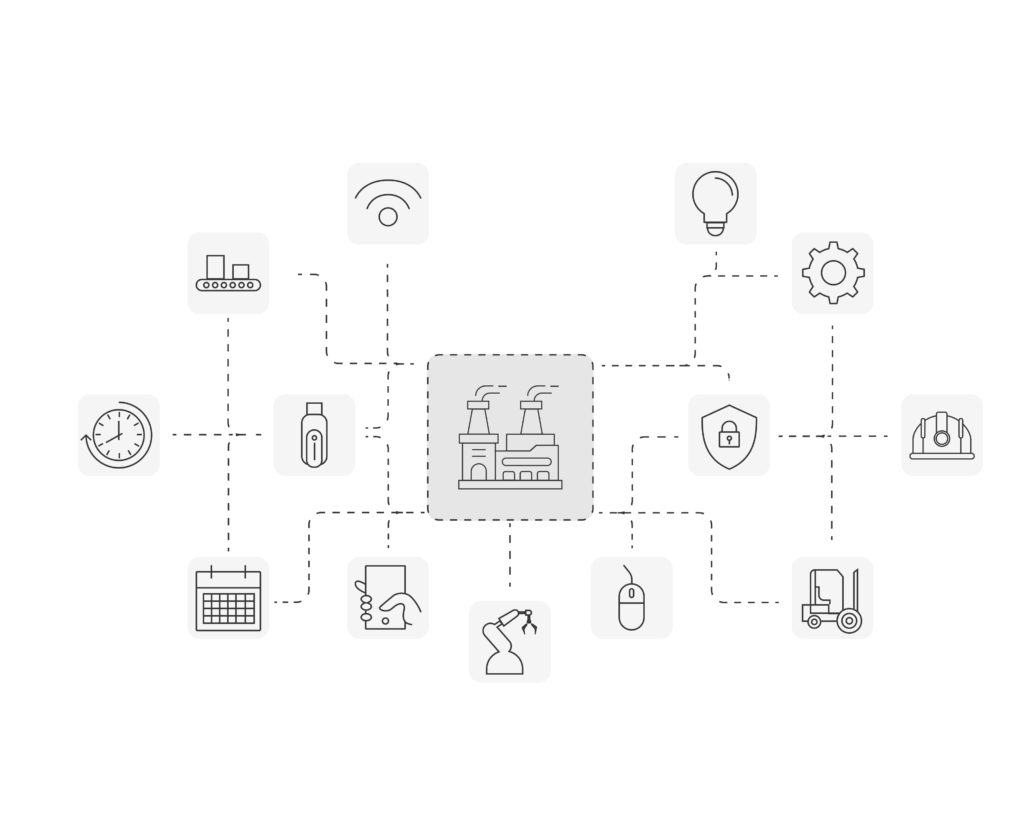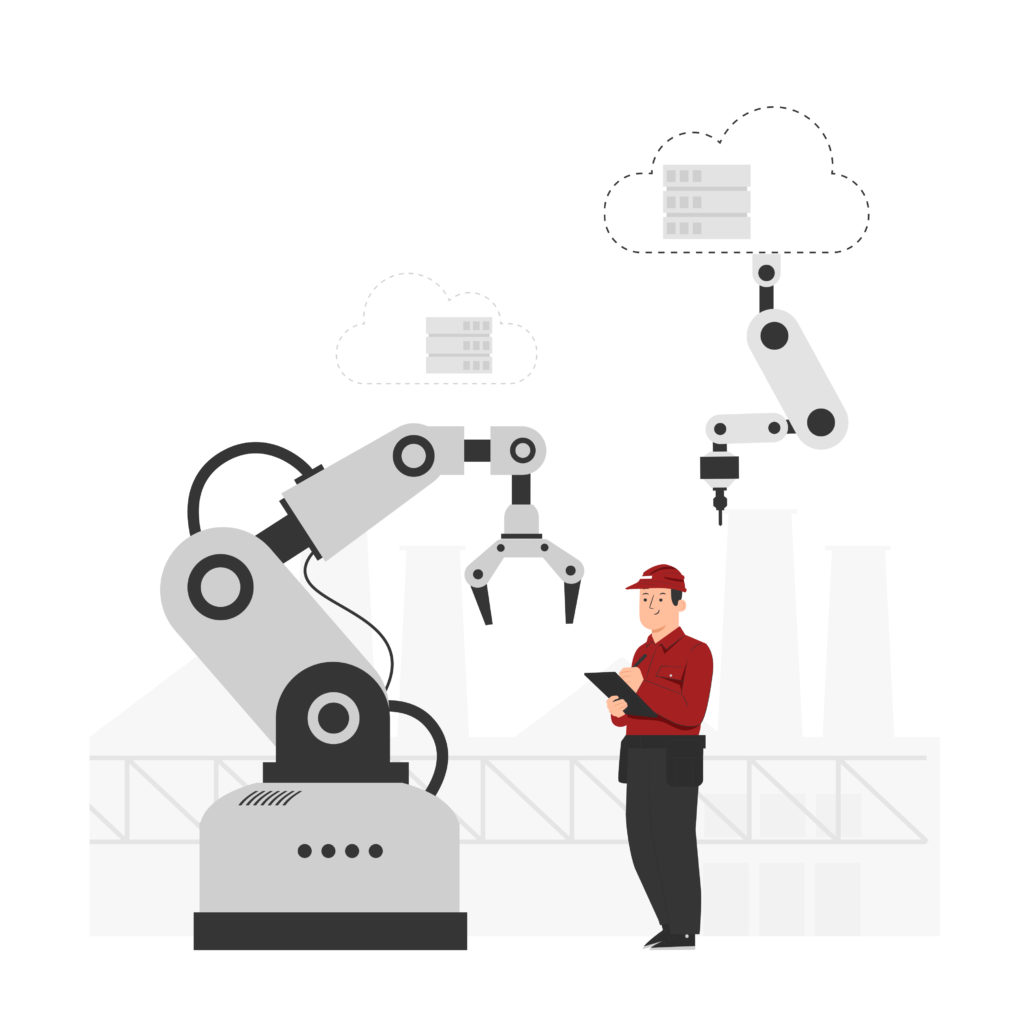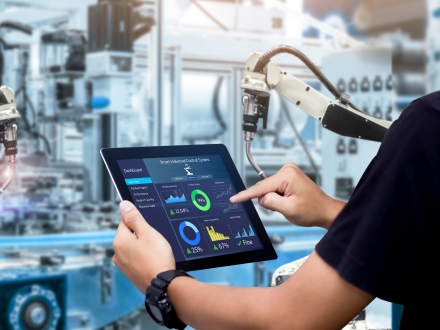Big data and AI analytics: Industry 4.0 entails the gathering of massive amounts of data from diverse sources such as IoT devices, factory equipment, weather, and traffic applications, as well as ERP and CRM systems. This data is analyzed in real-time through artificial intelligence and machine learning, leading to enhanced decision-making and automation across all facets of supply chain management, including procurement, R&D and engineering, enterprise asset management (EAM), logistics management, manufacturing, and supply chain planning.
Horizontal and vertical integration: Industry 4.0 is built on the foundation of both horizontal and vertical integration. Horizontal integration connects processes on a broader scale, including across multiple facilities and the entire supply chain. Vertical integration, on the other hand, unifies all levels of the organization, allowing data to flow seamlessly from the top floor to the production floor and vice versa. This results in a tightly integrated system where production is closely aligned with other business processes such as R&D, sales and marketing, quality assurance, and other departments, breaking down the barriers of data and knowledge silos.
Cloud computing: Cloud computing is a crucial element of Industry 4.0 and digital transformation, enabling a multitude of advancements. Today, cloud technology extends far beyond its traditional benefits, such as speed, scalability, cost-effectiveness, and storage. It serves as the cornerstone for cutting-edge technologies, including AI and the internet of things, and empowers businesses to drive innovation. The cloud serves as the home for the data powering Industry 4.0 technologies, and the cyber-physical systems at the heart of Industry 4.0 utilize the cloud for communication and coordination.
Augmented reality (AR): The integration of augmented reality, a technology that blends digital content with the physical environment, is a central aspect of Industry 4.0. AR allows employees to access real-time IoT data, digitized parts, training content, repair or assembly instructions, and more through smart glasses or mobile devices simply by looking at a physical object such as equipment or a product. Despite being in its nascent stage, AR has significant implications for maintenance, service, and quality assurance, as well as the training and safety of technicians.
Industrial internet of things (IIoT): The industrial internet of things in industry 4.0 is so critical to industry 4.0 that the two are frequently used interchangeably. The majority of physical objects in connected factories, including devices, equipment, machinery, robots, and products, are equipped with sensors and RFID tags that provide real-time data about their condition, performance, and location. This technology enables industry 4.0 companies to optimize their supply chains, quickly design and modify products, avoid equipment downtime, stay ahead of consumer trends, monitor products and inventory, and much more.
Additive manufacturing/3D printing: Additive manufacturing, also known as 3D printing, is a crucial technology powering Industry 4.0. Initially utilized as a tool for rapid prototyping, 3D printing has now expanded its range of applications to include mass customization and decentralized manufacturing. With this technology, parts and products can be stored as design files in virtual inventories and produced on-demand at the point of use, thereby reducing both transportation distances and costs.
Autonomous robots: Industry 4.0 is ushering in a new era of autonomous robots. These robots are designed to carry out tasks with limited human involvement and come in a range of sizes and functions, from inventory scanning drones to autonomous mobile robots for pick and place operations. Equipped with advanced software, AI, sensors, and machine vision, these robots are capable of tackling complex and delicate tasks and can process, analyze, and respond to information received from their environment.
Simulation/digital twins: A digital twin refers to a virtual representation of a physical machine, product, process, or system that is based on data collected from IoT sensors. As a key aspect of Industry 4.0, it empowers businesses to gain greater insights, evaluate, and optimize the efficiency and upkeep of industrial systems and products. For instance, an asset operator can utilize a digital twin to pinpoint a problematic component, anticipate potential problems, and enhance availability.
Cybersecurity: In the era of Industry 4.0, where connectivity and the utilization of big data are on the rise, strong cybersecurity measures are crucial. By adopting a Zero Trust approach and utilizing innovative technologies such as machine learning and blockchain, organizations can streamline the detection, prevention, and response to security threats, thereby reducing the risk of data breaches and ensuring seamless operations across their networks.
Edge computing: The need for immediate response in production operations requires that some data analysis be performed at the source, known as the “edge.” This reduces the delay from when data is generated to when a response is needed. For example, the identification of a safety or quality issue may require quick action with the equipment, and sending the data to the enterprise cloud and back to the factory floor may take too long and depend on the network’s reliability. Edge computing also ensures that data remains close to its origin, reducing the risk of security breaches.















